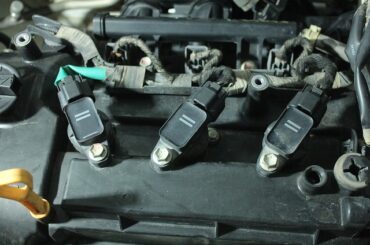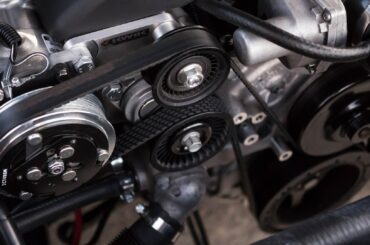In the world of manual transmissions, there exists a technique that sends adrenaline coursing through the veins of car enthusiasts. It’s a move that ignites the engine’s raw power, propelling the vehicle forward with explosive force. We’re talking about none other than “dump the clutch.” This exhilarating maneuver has long been associated with performance driving, delivering heart-pounding starts and awe-inspiring burnouts.
Dumping the clutch rapidly releases the clutch pedal while simultaneously applying the throttle. This technique allows for a sudden and aggressive power transfer from the engine to the wheels, resulting in instant acceleration and tire-scorching excitement. While primarily employed by those seeking the thrill of speed, understanding this technique goes beyond sheer excitement. It holds great significance in enhancing vehicle performance and driver control.
Mastering the technique of dumping the clutch is crucial for anyone driving a manual transmission vehicle. It involves a deep understanding of the clutch system, its components, and its intricate mechanics. By comprehending how to execute this technique effectively, drivers can unleash the full potential of their vehicles, achieving lightning-fast starts and captivating displays of controlled power.
However, it is important to note that dumping the clutch isn’t without its risks. The abrupt transmission engagement can strain various components excessively, potentially leading to premature wear and damage. Moreover, the intense wheel spin resulting from this maneuver can compromise traction and tire integrity. Therefore, responsible usage and considering alternative techniques become vital for ensuring both driver safety and vehicle longevity.
In the following sections, we will delve into the clutch’s intricacies, demystify the dumping technique, explore the associated risks, and discuss alternative approaches for achieving optimal performance. By understanding the nuances and mastering this art, drivers can experience the exhilaration of unleashing the power within their manual transmission vehicles while maintaining a responsible and controlled driving experience.
Contents
Understanding the Clutch
The clutch is a fundamental component in a manual transmission vehicle as the critical link between the engine and the wheels. Its role is to engage and disengage the engine’s power to facilitate smooth gear changes and transfer torque to the wheels.

The clutch disc, located between the engine and transmission, has friction linings on both sides. When the clutch pedal is pressed, the pressure plate releases the clamping force, allowing the clutch disc to separate from the flywheel. This disengages the engine’s power from the transmission, enabling gear changes.
Proper clutch maintenance is vital for achieving optimal performance and extending its lifespan. Regular inspections and adjustments of the clutch system, such as checking clutch fluid levels, ensuring proper pedal travel, and assessing clutch disc wear, are necessary. Additionally, maintaining appropriate clutch engagement techniques, such as smooth and controlled pedal movements, prevents excessive wear and tear on the components.
The Technique Demystified
Dumping the clutch may seem like a daring and complex maneuver, but with practice and a solid understanding of the process, it becomes an art that can be mastered. Let’s delve into a step-by-step guide to demystify this technique and unlock its potential.
1. Preparing for the maneuver: Positioning and grip
Before attempting to dump the clutch, it’s crucial to position yourself correctly. Ensure your seat and mirrors are adjusted to provide a comfortable and optimal driving position. Have your right foot ready on the throttle pedal, and position your left foot on the clutch pedal.
Maintain a firm grip on the steering wheel with both hands, ready to counter any sudden wheel spin or torque steer during the maneuver.
2. Applying throttle: Balancing power and control
As you prepare to engage the clutch, smoothly apply the throttle using your right foot. The goal is to rev the engine to a higher RPM but be mindful not to overdo it, as excessive wheel spin or loss of control can result.
Balancing power and control is essential. Gradually increase the throttle input while maintaining awareness of the traction available. This will allow you to achieve an optimal launch without compromising stability.
3. Releasing the clutch: Timing and speed
The most critical aspect of dumping the clutch is the precise moment of clutch release. It requires a delicate balance of timing and speed. As you release the clutch pedal rapidly, be prepared for a sudden transmission engagement.
Timing is key here. Aim to release the clutch when the engine RPM matches the desired power delivery for the launch. The speed at which you release the clutch also plays a crucial role. Releasing it too slowly can result in a sluggish start, while releasing it too quickly may cause excessive wheel spin.
Importance of practice and gaining a feel for the clutch engagement point:
Dumping the clutch effectively is a skill that requires practice and experience. Each vehicle may have a slightly different engagement point, and mastering the technique involves gaining a feel for the clutch.
Spend time familiarizing yourself with your vehicle’s clutch engagement point through gradual clutch release during regular driving. This practice allows you to understand the point at which the clutch engages and the associated RPM range. With experience, you can synchronize the throttle input and clutch release more effectively, maximizing your vehicle’s performance during high-powered starts.
By following this step-by-step guide and investing time in practice, you can demystify the technique of dumping the clutch. As you gain experience and refine your skills, you’ll develop a heightened sense of clutch engagement, allowing for smoother launches and a thrilling driving experience.
The Risks Involved
While dumping the clutch can provide an exhilarating experience, it’s essential to be aware of this technique’s potential risks and drawbacks. Understanding these risks can help drivers make informed decisions and exercise responsible usage.
1. Increased wear and tear on the clutch components:
Dumping the clutch involves a rapid and forceful engagement of the transmission. This abrupt power transfer can strain the clutch components, including the clutch disc, pressure plate, and release bearing. Over time, this can lead to accelerated wear and a reduced lifespan of these components, necessitating costly repairs or replacements.
2. Potential damage to the drivetrain:
The sudden jolt caused by dumping the clutch can also harm the drivetrain. The rapid engagement can subject various drivetrain components, such as the transmission gears, driveshafts, and differential, to increased stress. Continued or frequent misuse of this technique can potentially lead to premature wear or even severe damage to these vital parts of the vehicle.
3. Excessive wheel spin and traction loss:

Dumping the clutch often results in a rapid increase in engine power reaching the wheels, which can cause excessive wheel spin. This can be particularly problematic on surfaces with low traction, such as wet or icy roads. Loss of traction can compromise vehicle control and increase the risk of accidents. Additionally, repeated wheel spin can cause unnecessary wear on the tires, reducing lifespan.
Cautionary advice on responsible usage and avoiding unnecessary risks:
It is crucial to exercise responsible usage and consider alternative techniques to minimize the risks of dumping the clutch.
1. Practice moderation: Avoid frequent or unnecessary use of this technique. Reserve it for appropriate scenarios, such as racing situations or controlled burnouts.
2. Consider alternative techniques: Explore other techniques that provide better control, such as smooth clutch engagement with progressive throttle input or utilizing launch control systems in some modern sports cars.
3. Maintain the clutch system: Regularly inspect and maintain the clutch system to ensure optimal performance. This includes checking clutch fluid levels, adjusting pedal travel, and promptly addressing any signs of wear or damage.
4. Be mindful of road conditions: Exercise caution when executing this technique, particularly on surfaces with low traction. Adjust your driving style to match the road conditions, and always prioritize safety.
By being aware of the risks involved and adopting responsible driving practices, enthusiasts can continue to enjoy the thrill of dumping the clutch while minimizing unnecessary wear, potential damage, and unsafe situations.
When to Dump the Clutch
Dumping the clutch is a technique best suited for specific scenarios that require quick and forceful acceleration. Understanding the appropriate situations for this technique can enhance your driving experience and maximize performance.
1. Achieving quick and aggressive starts in racing situations:
Dumping the clutch can provide a significant advantage in competitive racing environments where every fraction of a second counts. By rapidly engaging the clutch and applying throttle, drivers can unleash the engine’s full power, allowing lightning-fast starts and gaining an edge over opponents.
2. Performing controlled burnouts for entertainment purposes:
Dumping the clutch is often associated with performing controlled burnouts, which can be an entertaining and visually impressive display of power. This technique makes the wheels spin rapidly, creating smoke and leaving impressive tire marks on the pavement. Controlled burnouts are commonly seen at automotive events, car shows, and motorsport exhibitions, serving as crowd-pleasing spectacles.
3. Adapting to challenging driving conditions, such as slippery surfaces:
In situations where traction is limited, such as on wet or icy surfaces, dumping the clutch can be used to adapt to challenging driving conditions. By engaging the clutch rapidly, drivers can momentarily reduce the power delivered to the wheels, minimizing wheel spin and enhancing control. This can be particularly helpful when navigating through slippery terrains or encountering unexpected loss of traction.
It is important to note that while dumping the clutch can be advantageous in these specific situations, responsible and cautious execution is paramount. The risks associated with this technique should be carefully considered, and unnecessary usage outside of suitable scenarios should be avoided. Always prioritize safety and ensure the chosen driving technique aligns with the current road conditions and surrounding environment.
Alternative Techniques
While dumping the clutch can provide an adrenaline rush and exhilarating starts, it’s essential to be aware of alternative techniques that offer better control and can optimize your driving experience. These techniques prioritize smoothness, precision, and overall vehicle performance.
1. Smooth clutch engagement with progressive throttle input:
Rather than releasing the clutch rapidly, this technique emphasizes a smooth and gradual engagement of the clutch while simultaneously applying throttle. Drivers can achieve a controlled and seamless launch by slowly releasing the clutch pedal and progressively increasing the throttle input. This method reduces the risk of excessive wheel spin and improves traction, resulting in improved acceleration and stability.
2. Rev-matching for smoother and faster gear changes:
Rev-matching is commonly used during downshifts to synchronize the engine speed with the transmission. By blipping the throttle and matching the engine RPM to the lower gear’s target RPM, rev-matching allows for smoother and faster gear changes. This technique minimizes driveline shock and promotes a seamless transition between gears, enhancing vehicle performance and driving pleasure.
3. Launch control systems in modern sports cars:
Many modern sports cars have launch control systems to optimize starts and maximize performance. These systems utilize advanced electronics and traction control algorithms to deliver optimal power to the wheels while minimizing wheel spin and maintaining traction. By activating the launch control system, drivers can achieve consistent and efficient launches with precision and control.
These alternative techniques prioritize smoothness, precision, and control, allowing drivers to extract maximum vehicle performance while minimizing the risks associated with aggressive clutch dumping. By mastering these techniques, enthusiasts can enhance their driving experience, improve overall vehicle handling, and reduce unnecessary clutch and drivetrain component wear.
Conclusion
The art of dumping the clutch in manual transmissions has a profound impact on vehicle performance, delivering thrilling starts and captivating displays of power. However, it is crucial to approach this technique with caution and responsibility, considering its potential risks and drawbacks.
Dumping the clutch can lead to increased wear and tear on clutch components, potential damage to the drivetrain, and excessive wheel spin, compromising traction. These risks emphasize the importance of responsible driving practices and the need to explore alternative techniques that offer better control and minimize unnecessary wear and risks.

By prioritizing smooth clutch engagement, utilizing rev-matching for smoother gear changes, and embracing launch control systems in modern sports cars, drivers can optimize their vehicle’s performance while maintaining control and reducing stress on vital components.
Responsible driving practices play a significant role in ensuring both driver safety and vehicle longevity. Practicing moderation, avoiding unnecessary usage of aggressive techniques, and adapting driving style to match road conditions are crucial aspects of responsible driving.
Unveiling the Untold Secrets: Why are used Chevy Malibus so cheap in 2023
The Ultimate Guide to Thrilling Bolt Ons Power Upgrades in 2023






